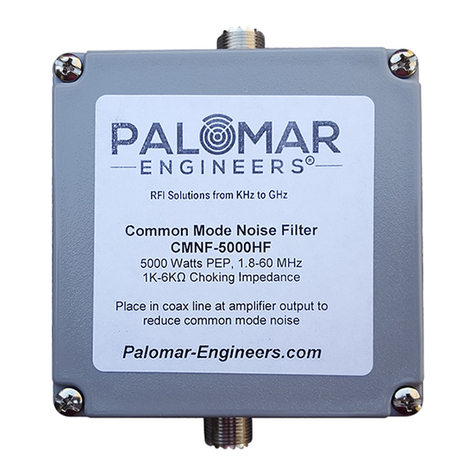
from the 50 ohms transmission line to the radiating element. In mobile instal
lations (cars, trucks, boats, etc.), an antenna system that is non-directional
should be used.
A vertically polarized quarter-wave length whip antenna provides the most
reliable operation and greatest range. The shorter, loaded type whip antennas
are more attractive, compact and adéquate for applications where the maximum
possible distance is not required. Also the loaded whips do not present the
Problems of height imposed by the füll quarter wave length whip.
Mobile whip antennas utilize the metal body of the vehicle as a ground plane.
When mounted at a corner of the vehicle they are slightly directional, in the
direction of the body of the vehicle. For ail practical purposes, however, the
radiation pattern is non-directional. The slight directional characteristic will be
observed only at extreme distances. A standard antenna connector (type
SO-239) is provided on the transceiver for easy connection to a standard PL-259
cable termination.
If the transceiver is not mounted on a metal surface, it is necessary to run a
separate ground wire from the unit to a good metal electrical ground in the
vehicle. When installed in a boat, the transceiver will not operate at maximum
efficiency without a ground plane, unless the vessel has a Steel hulL
Before installing the transceiver in a boat, consult your dealer for information
regarding an adéquate grounding system and prévention of electrolysis between
fittings in the hüll and water.
Remote Speaker
The external speaker jack (EXT. SP) on the rear panel is used for remote
receiver monitoring. The external speaker should hâve 8 ohms impédance and
be able to handle at least 3 Watts. When the external speaker is plugged in, the
internai (built-in) speaker is disconnected.
Public Address
An external 8 ohms, 3 Watts speaker must be connected to the Public Address
speaker jack (PA SP) on the rear panel when the transceiver is used as a Public
Address system. The speaker should be directed away from the microphone to
prevent acoustic feedback. Physical séparation or isolation of the microphone
and speaker is important when operating the PA at high output levels.





























